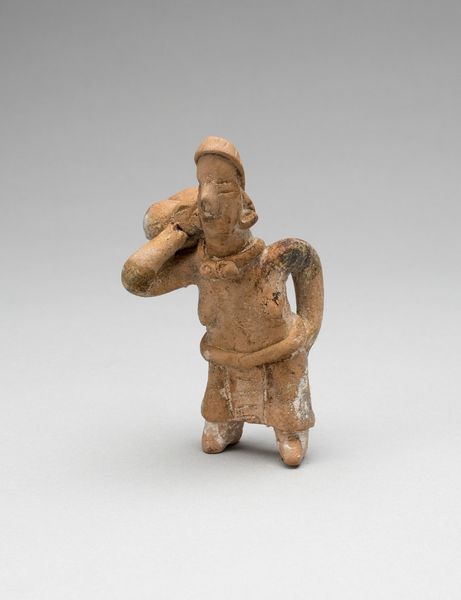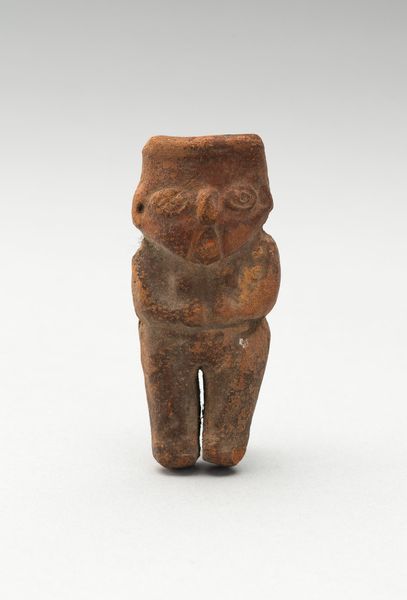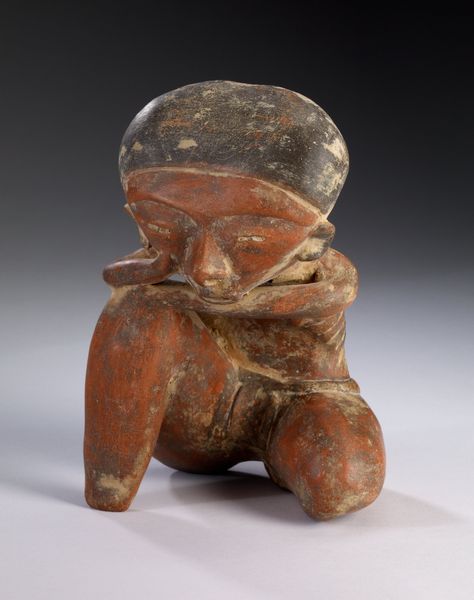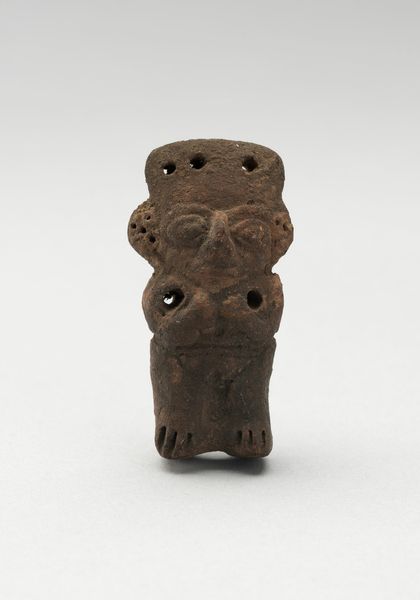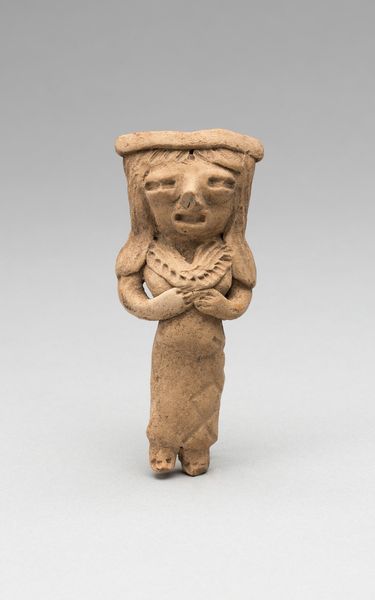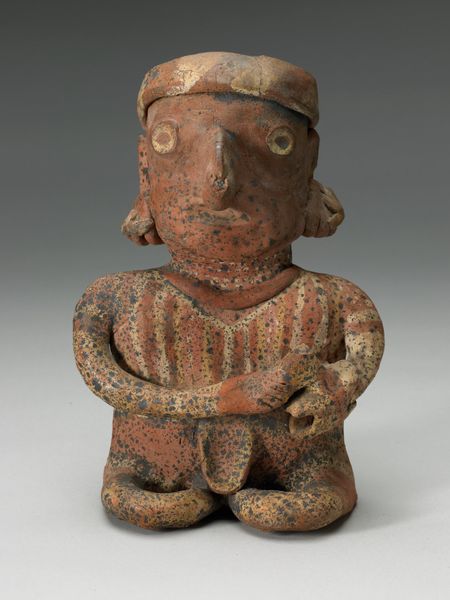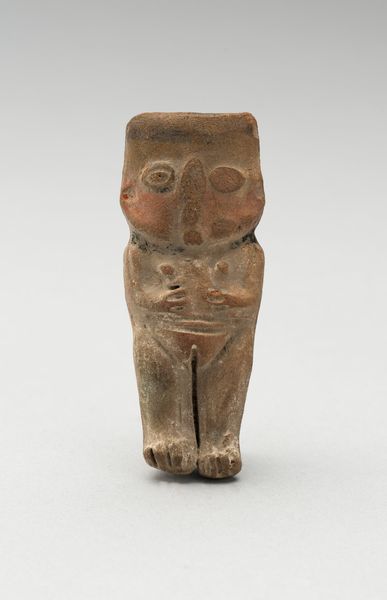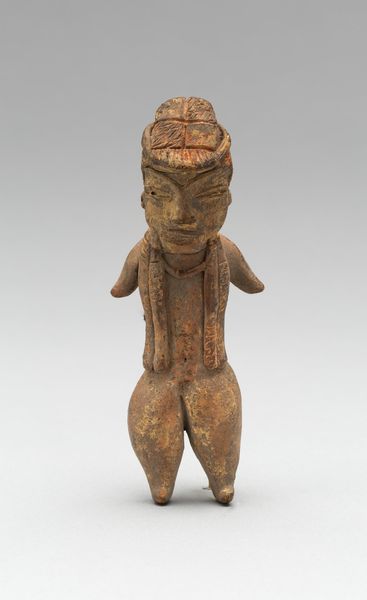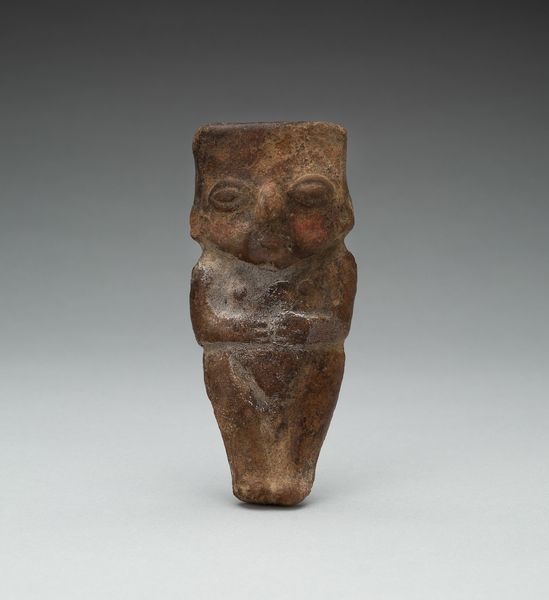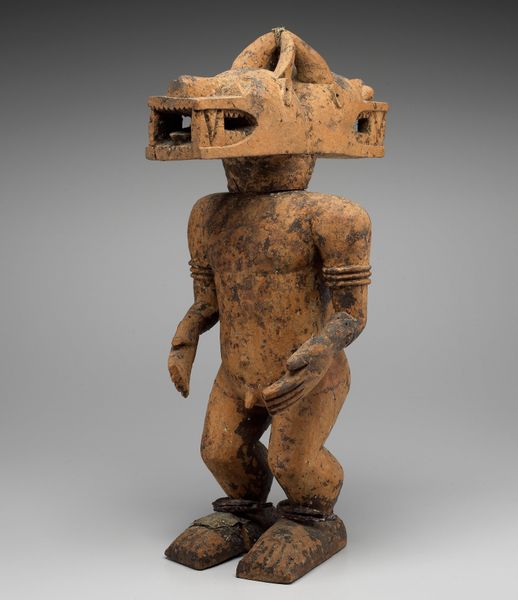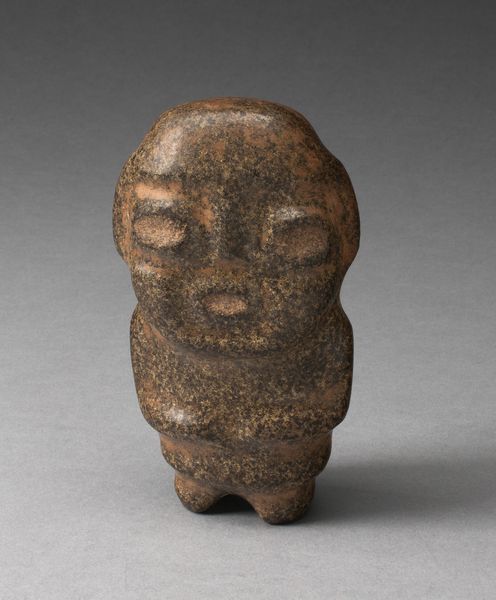
ceramic, sculpture, terracotta
#
ceramic
#
figuration
#
sculpture
#
terracotta
#
indigenous-americas
Dimensions: H. 13.7 cm (5 3/8 in.)
Copyright: Public Domain
Curator: This is a striking ceramic sculpture entitled "Standing Female Figure," dating back to around 300 C.E., originating from Michoacan. Editor: Immediately, the serene composure juxtaposed with the seemingly crude form makes an arresting first impression. Her arms and legs have such solidity to them. Curator: Indeed. The indigenous artists in the Americas were not so concerned with capturing photorealism. The abstract geometric composition and overall simplicity of this ceramic sculpture, in my estimation, elevates its symbolic nature. Editor: Precisely. Consider how sculptures such as this one may have operated in relation to community and kinship. Perhaps she served as a figure of veneration during religious ceremonies? Her slightly abstracted, pot-shaped head begs more inquiry. What does it represent? Curator: Agreed. Its form and utility could symbolize her role in storing seeds or valuables. What do you think the relationship between functionality and aesthetics indicates within this period and culture? Editor: Given how communities and institutions like the Art Institute shape access to such art, it is pivotal to examine the colonial legacies inherent in such collection and displays of indigenous American sculptures. Curator: Fair point, the provenance narratives of these works undoubtedly remain problematic. It’s an important reminder to investigate and reframe their stories continually. Editor: On closer observation, the linear contours that define her closed eyes contribute to the figure's peaceful and still character, prompting introspective speculation. Curator: Exactly! And yet, despite its stillness, one senses an enduring power embedded in the earth from which it comes, reminding me about cyclical creation and re-creation processes within social life. Editor: So, ultimately, reflecting on both aesthetic qualities and historical contexts permits viewers such as ourselves to more critically perceive this arresting piece, beyond surface-level assessments. Curator: I agree. It really does provide opportunities to contemplate the dynamic between aesthetics, form, materiality, historical narratives, and our interpretative contributions as modern viewers.
Comments
No comments
Be the first to comment and join the conversation on the ultimate creative platform.
